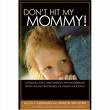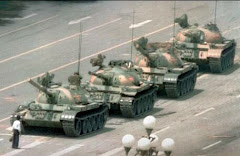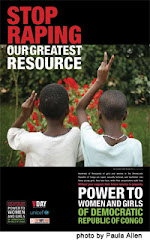
On February 17, 2008 Kosova declared independence from Serbia.
Kosova has been a highly contested territory. The majority of the population are ethnic Albanians and it was an autonomous province when the region was unified under the former Yugoslavia. Kosova is the location of some of the most important shrines for the Serbian Orthodox Church, and of course there are conflicts about resources, power, and decision-making. "Belgrade regards Kosovo as the cradle of Serb culture and religion and sees its independence as illegal." For more background information, click here for CNN In-Depth reports. CNN also has an excellent timeline which explains the history simply and clearly.
 Reports from the Associated Press described rioting in Belgrade (the capital of Serbia) and Pristina (the capital of Kosova), as Serbs protested the declaration of independence. Massive protests against the independent Kosovar state have been increasingly destructive, as rioters assert that "Kosovo is Serbia." The United Nations reported that 200,000-250,000 protesters took to the streets in Belgrade last week. (listen to the whole report here)
Reports from the Associated Press described rioting in Belgrade (the capital of Serbia) and Pristina (the capital of Kosova), as Serbs protested the declaration of independence. Massive protests against the independent Kosovar state have been increasingly destructive, as rioters assert that "Kosovo is Serbia." The United Nations reported that 200,000-250,000 protesters took to the streets in Belgrade last week. (listen to the whole report here) Looting has also been reported in Belgrade. One witness who posted looting footage on on youtube attached this statement to the video: "I would like to say that these are only marginal appearances, and that the huge majority of citizens of Serbia are normal and honest people, and I am proud to be one of them." See the video:"Kosovo za patike" ("Kosovo for sneakers/gym shoes").
Click here to read Samantha Power's reaction to the Kosovar declaration of independence (she doesn't sound worried about it deteriorating into mass violence and she explains why).
Here is another view of the situation, which is highly critical of the Albanian perspective and illuminates some of the issues from the Serb perspective: please click here to read Diana Johnstone's article.
Police said they arrested nearly 200 rioters Thursday night during the worst anti-Western violence seen on Belgrade streets since former Serbian president Slobodan Milosevic was ousted in 2000.
Rioters torched several offices of the U.S. Embassy's consular section. They also attacked the Embassies of Germany, Belgium, Turkey and Croatia. One person died and more than 150 were injured.
Today, just a couple of hours ago, the European Union has pulled out of a town in northern Kosova due to Serb-initiated hostility towards EU personnel and property. The Serbian state had resisted the EU presence in Kosova before the declaration of independence, and the violence has escalated since last week.
 There has been ongoing and escalating violence in the region as Serbia has rejected the declaration of independence. Here protesters display a Serbian nationalist hand gesture that has intense cultural significance in the region (during my travels in Bosnia and Croatia, I was repeatedly warned never to make this gesture with three fingers pointing, even by accident, because it represents a vision of Serbian dominance and power).
There has been ongoing and escalating violence in the region as Serbia has rejected the declaration of independence. Here protesters display a Serbian nationalist hand gesture that has intense cultural significance in the region (during my travels in Bosnia and Croatia, I was repeatedly warned never to make this gesture with three fingers pointing, even by accident, because it represents a vision of Serbian dominance and power).Many EU member countries have recognized Kosova, including United States,France, Germany, Denmark, and Turkey. However, several countries oppose recognition including Russia, Serbia, China and Spain. Now Serbia is demanding that the United States "annul" its recognition of Kosova: according to the Serbian Prime Minister, this would "restore stability to the Balkans."
 The blue countries have formally recognized (or intend to recognize) Kosova. The gray countries have been neutral or delayed about responding. States which have expressed concern over unilateral moves or wish for further negotiations are shown in orange. States refusing to recognize Kosovo as independent are shown in RED.
The blue countries have formally recognized (or intend to recognize) Kosova. The gray countries have been neutral or delayed about responding. States which have expressed concern over unilateral moves or wish for further negotiations are shown in orange. States refusing to recognize Kosovo as independent are shown in RED.Russia (a permanent member of the UN Security Council) backs Serbia and has condemned the independence declaration issued by the Kosovo parliament on 17 February. Serbia and Russia assert that the Kosovo state is illegal. Spain and China (another permanent member of the Security Council) have also refused to recognize the Kosovar state.
The BBC and other news agencies report that Russia is backing Serbia's refusal of Kosovo's independent status. Russia has even threatened to use "brute force" against NATO or other troops supporting the Kosovar Albanian independence.
Russia's ambassador to NATO, Dmitry Rogozin, has warned ... "If the EU develops a unified position or if Nato exceeds its mandate set by the UN, then these organizations will be in conflict with the UN." In that case Russia would "proceed on the basis that in order to be respected we need to use brute force."I entered the word "Kosovo" on youtube, and I came up with several really disturbing videos exclaiming, "Kosovo is Serbia" ("Kosovo je Srbija"). With my limited understanding of the language, I can understand enough to tell this is scary war propaganda. Even if you don't understand Serbian, the pictures of soldiers with huge guns pointed at little red-roofed villages communicate a threatening message that transcends words. I didn't want to embed this video (show it on our blog like other videos), because I don't want to encourage this kind of intimidation through video propaganda, but I thought I would link to it in case you want to take a look for yourself.
I am worried.
Serbia has a consistent history of perpetrating acts of calculated political violence against large numbers of civilians in order to prevent secession.
Mass violence doesn't just happen: in builds, and often it starts with angry protests, violence to property and symbolic targets (such as Embassies).
Intervention NOW is crucial!
The eyes of the world must be on the Serbian state (and its Russian backers). I believe that people learn through consequences, and when people are allowed by the world community to perpetrate acts of mass violence without accountability, there is no telling how deep human beings can delve into darkness and destruction.
However, when the world is watching, people are less likely to perpetrate heinous human rights abuses.
Some things we can all do are to stay informed, disseminate information, and talk about what is happening in Kosova.
 Show somebody the map so they can see where it is (a brand new country smack dab in the middle of Europe!).
Show somebody the map so they can see where it is (a brand new country smack dab in the middle of Europe!).
Urge any countries with whom you identify to support Kosovar independence, and to take actions to prevent further violence in the region.













